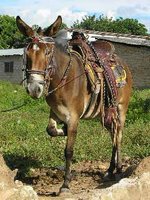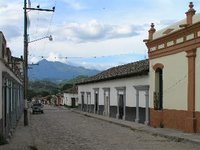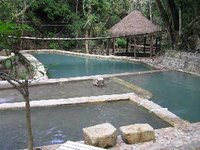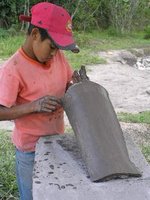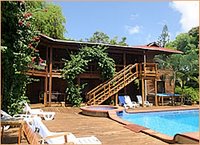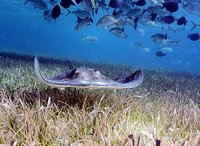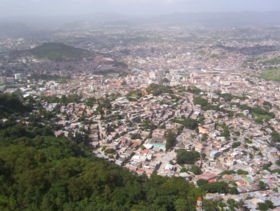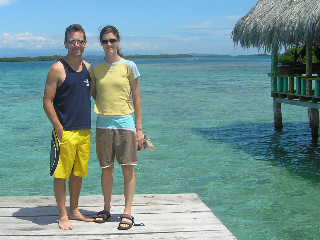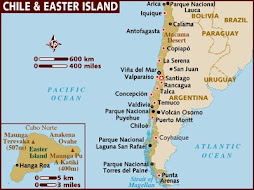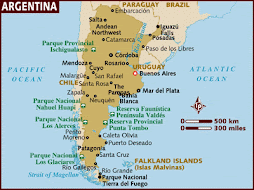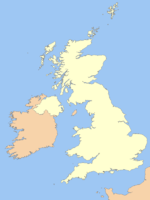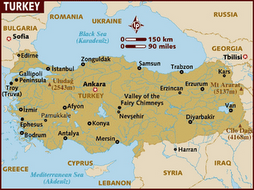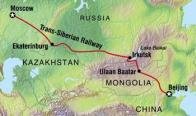La Esperanza
This place appealed because it was described as a cool (temperature wise), country mountain town with a good fresh fruit and vegie market... so I thought it would be a nice place to study at their language school for a week. Only problem was, they`re not taking students at the moment! However the friendly hotel owner organised for one of his friends to tutor me, so all worked out quite well in the end, and I´ve been brushing up on verbs and reading articles in the newspaper.
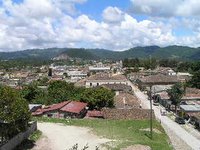

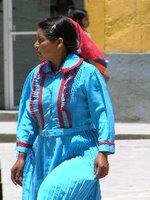 The town itself while certainly functionaly isn´t really much to look at, apart from this one grotto church on the hill, from where you get quite a good view. The people are quite interesting though, with many are farmers from the surrounding countryside coming in to sell their produce in the markets. Think potatoes, beans, cucumbers, peppers, chiles, apples, bananas, lychee, strawberries... yum. And there are many Lencas - the name given to the local hondurenos decended presumeably from the maya some time back. The Lenca women wear quite distinctive headscarfs, and they are apparently quite good potters too! Tourist info in the town was scarce, the lonely planet somewhat out of date and the map when I did eventually find one was cryptic! So I didn´t end up finding the mysterious holes in the ground (thought possibly to be mayan mines for obsidian), even though I did wander a fair bit in my spare time.
The town itself while certainly functionaly isn´t really much to look at, apart from this one grotto church on the hill, from where you get quite a good view. The people are quite interesting though, with many are farmers from the surrounding countryside coming in to sell their produce in the markets. Think potatoes, beans, cucumbers, peppers, chiles, apples, bananas, lychee, strawberries... yum. And there are many Lencas - the name given to the local hondurenos decended presumeably from the maya some time back. The Lenca women wear quite distinctive headscarfs, and they are apparently quite good potters too! Tourist info in the town was scarce, the lonely planet somewhat out of date and the map when I did eventually find one was cryptic! So I didn´t end up finding the mysterious holes in the ground (thought possibly to be mayan mines for obsidian), even though I did wander a fair bit in my spare time.Trujillo
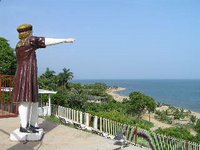 It was a bit of a hike across the country (10 hours, 6 of which were in a cockroach infested bus) to get to Trujillo. Trujillo is on the carribean coast, and is a town with some history... founded in 1500s by the spanish, its been relocated, fought over and raided several times, deserted for about 150years, then re-occupied and re-built with fortification, and then in more recent times its been
It was a bit of a hike across the country (10 hours, 6 of which were in a cockroach infested bus) to get to Trujillo. Trujillo is on the carribean coast, and is a town with some history... founded in 1500s by the spanish, its been relocated, fought over and raided several times, deserted for about 150years, then re-occupied and re-built with fortification, and then in more recent times its been 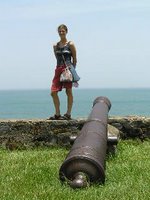 influenced by americans and their fruit trading in the area (bananas, coconut, pineapple and others). Anyway its a gorgeous town on a hill, overlooking a lovely huge sand bay, with a mountain range behind. Lovely. Hot, but there generally is some breeze.
influenced by americans and their fruit trading in the area (bananas, coconut, pineapple and others). Anyway its a gorgeous town on a hill, overlooking a lovely huge sand bay, with a mountain range behind. Lovely. Hot, but there generally is some breeze.Life is pretty laid back here, there aren´t many tourists, and people are friendly and want to talk to you. Food is good with lots of seafood, pan de coco (coconut bread)and fresh fruit and veg, and I´m enjoying the beach - swimming, and sipping on limonadas
 while trying to read the newspaper! I´ve tee-ed up some spanish classes with a local school teacher (Chavely) through the tourist information centre here. So I´m practicing my verbs and grammar, and also learning more about local issues and customs. And I´m finding myself using spanish pretty much all the time (as there is no one to speak to in English, and the TV is all spanish too)
while trying to read the newspaper! I´ve tee-ed up some spanish classes with a local school teacher (Chavely) through the tourist information centre here. So I´m practicing my verbs and grammar, and also learning more about local issues and customs. And I´m finding myself using spanish pretty much all the time (as there is no one to speak to in English, and the TV is all spanish too)Yesterday I went out to visit a nearby palm oil factory (yes, I know I´m a worry, but I can´t help but be curious!), and the engineer there was very helpful explaining the process and showing me about. Honduras is now using palm oil to produce bio-diesel (amongst other products) and this is in the news a fair bit as the government is currently subsidising petrol (costly) to keep it accessible to the public, and it is pushing for the use of more bio-diesel as a more affordable fuel. Currently its being trialled in increasing proportions in community buses.
Whats next?
Heading back to meet Phil in La Ceiba this Friday... and by then he`ll be a fully qualified dive instructor... WOW! (And yes he should put something on this blog to let you know what fun he´s got up to over the last few weeks)
